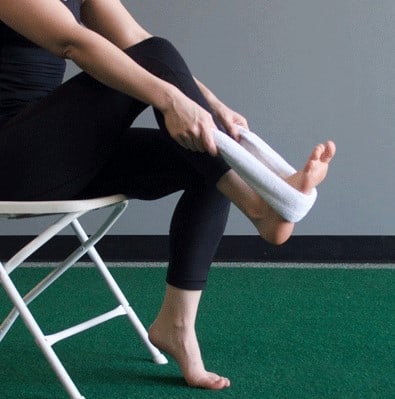What Is Plantar Fasciitis?
The sole of the foot is known as the plantar area. Plantar Fasciitis is the inflammation of the fascia, a thick band of tissue, which occurs at the bottom of your heels. A thick web-like ligament, called Plantar Fascia, joins your heels to your toes helping you to walk. Plantar Fascia is the longest ligament of the body.
Plantar Fasciitis results in severe pain and stiffness in heels, causing heel spurs. Plantar Fasciitis is considered as one of the most orthopedic complaints. In your daily life, the ligaments of Plantar Fasciitis experience a lot of wear and tear. Putting too much pressure on your feet can, ultimately, damage the ligaments.
According to a study done in 2003, inflammation is not necessary to occur; this condition may involve the degeneration of plantar fascia.
What Are The Causes Of Plantar Fasciitis?
Plantar Fasciitis is more likely to occur among the following kind of people;
- Men and Women who fall in the age group of 40-70 years
- Women are at greater risk, especially pregnant women
- Obese or Overweight people as there is increased pressure on your plantar fascia ligaments.
- People having very flat feet or high arches
- People who wear shoes who do not have a good arch support system
- People who, often, wear high-heel shoes
- A long-distance runner
What Are The Symptoms Of Plantar Fasciitis?
Following are some of the obvious symptoms of Plantar Fasciitis:
- Chronic Pain at the bottom of heels or at the mid-foot area causes Plantar Fasciitis. The pain develops slowly overtime.
- Burning or pain in the bottom of foot that extends outward from the heel. The pain might mild or might be sharp.
- Stiffness in heels.
- Prolonged Activity can result in the pain to grow worse. This happens because of increased irritation.
What Is The Treatment Of Plantar Fasciitis?
- Physical Therapy is an essential part of treating Plantar Fasciitis. Therapy helps you in stretching your Achilles tendons and plantar fascia.
- Exercising on daily basis will help in strengthening your lower leg muscles that results in stabilizing your walk.
- An ultrasound device may be used by your physician. The doctor might inject any medicine.
- Corticosteroids may also be applied by the doctor to the arch of the foot or to the skin of the heel. In order to let the steroid pass through the skin into your muscle, a painless electric current is given.
- Home remedies like icing, taking rest and using anti-inflammatory drugs can also help in curing the disease.
- If every method fails to cure you, the physician may recommend extracorporeal shock wave therapy. In this process, healing is stimulated within the ligament of your heel by the help of sound waves. This treatment can be harmful as it can cause bruises or numbness in your heels.
What Are The Exercises For Treating Plantar Fasciitis?
To cure this chronic heels pain, try the following exercises and heal yourself;
- Pain can be relieved by frequently doing gentle stretches.
- Stretching your calves can also help in reducing pain.
- While exercising, stop and stretch to soothe your heels.
- Give your plantar fascia sometime to heal by reducing activities like running, swimming and long-time walks.


